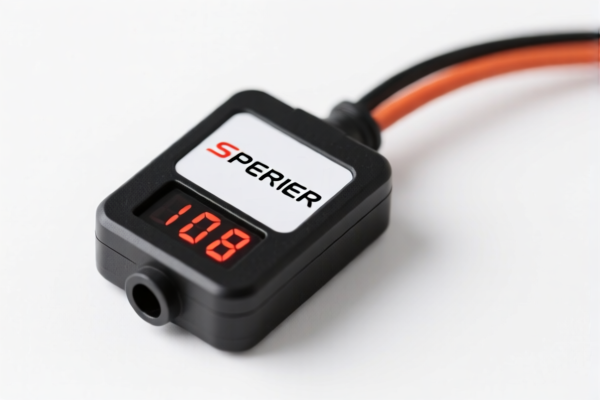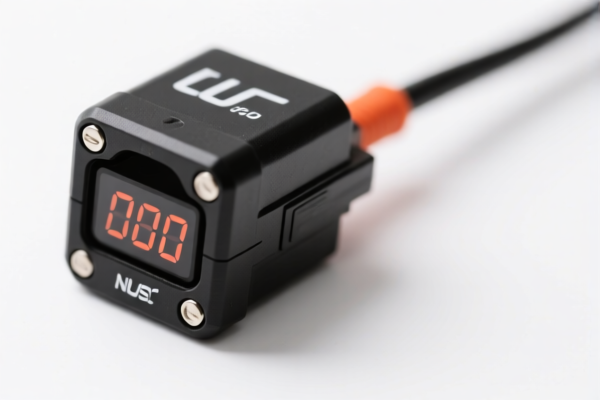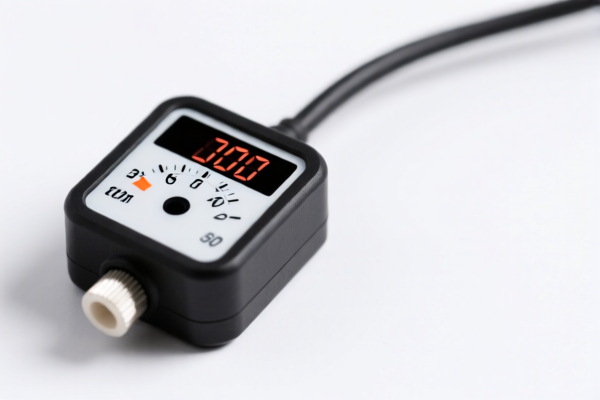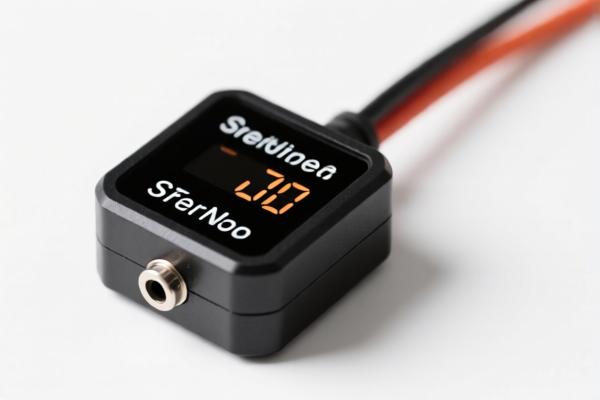| HS Code | Official Doc | Tariff Rate | Origin | Destination | Effective Date |
|---|---|---|---|---|---|
| 9026802000 | Doc | 55.0% | CN | US | 2025-05-12 |
| 9026806000 | Doc | 37.5% | CN | US | 2025-05-12 |
| 9014804000 | Doc | 55.0% | CN | US | 2025-05-12 |
| 9014805000 | Doc | 55.0% | CN | US | 2025-05-12 |
| 9031808085 | Doc | 30.0% | CN | US | 2025-05-12 |
| 9031808070 | Doc | 30.0% | CN | US | 2025-05-12 |
| 8531809051 | Doc | 37.5% | CN | US | 2025-05-12 |
| 8531809005 | Doc | 37.5% | CN | US | 2025-05-12 |
| 8512300040 | Doc | 57.5% | CN | US | 2025-05-12 |
| 8512909000 | Doc | 57.5% | CN | US | 2025-05-12 |
| 8543706000 | Doc | 55.0% | CN | US | 2025-05-12 |
| 8543906800 | Doc | 55.0% | CN | US | 2025-05-12 |
| 3926909910 | Doc | 42.8% | CN | US | 2025-05-12 |
| 3923900080 | Doc | 58.0% | CN | US | 2025-05-12 |




Sewage Sensor
A sewage sensor is a device used to monitor various parameters of wastewater, commonly employed in wastewater treatment plants, sewage networks, and environmental monitoring applications. These sensors provide data crucial for process optimization, pollution control, and ensuring regulatory compliance.
Materials
Sewage sensors utilize a range of materials selected for their resistance to corrosion, biofouling, and the harsh chemical environment of wastewater. Common materials include:
- Stainless Steel: Used for sensor housings and structural components due to its durability and resistance to corrosion. Grades like 316 stainless steel are frequently preferred.
- Titanium: Offers superior corrosion resistance, particularly in aggressive environments, but is more expensive than stainless steel.
- Plastics (e.g., PVC, Polypropylene, PTFE): Used for sensor bodies, particularly for sensors measuring flow or level, where chemical resistance is paramount. PTFE (Teflon) is often used for components in direct contact with corrosive fluids.
- Ceramics: Employed in some electrodes and components due to their chemical inertness and stability.
- Electrodes (e.g., Platinum, Gold, Graphite): Used in electrochemical sensors for measuring specific ions or parameters.
Purpose
The primary purpose of a sewage sensor is to provide real-time data on the quality and quantity of wastewater. This data is used for:
- Process Control: Optimizing treatment processes (e.g., aeration, chemical dosing) to improve efficiency and reduce costs.
- Pollution Monitoring: Detecting and quantifying pollutants to ensure compliance with environmental regulations.
- Early Warning Systems: Identifying abnormal conditions (e.g., high levels of pollutants, blockages) to prevent environmental damage.
- Network Management: Monitoring flow rates and levels in sewage networks to prevent overflows and optimize pumping strategies.
- Data Logging & Reporting: Providing historical data for analysis and regulatory reporting.
Function
Sewage sensors function by detecting and measuring various physical, chemical, and biological parameters. Common measurement principles include:
- Electrochemical: Measures ion concentrations (e.g., pH, dissolved oxygen, conductivity, nitrate, ammonia) using electrodes.
- Optical: Detects turbidity, color, or the presence of specific substances using light absorption, scattering, or fluorescence.
- Ultrasonic: Measures flow rates or levels using sound waves.
- Radar: Measures levels using radio waves.
- Pressure: Measures hydrostatic pressure to determine liquid levels.
- Magnetic: Measures flow rates using magnetic fields.
Usage Scenarios
- Wastewater Treatment Plants: Monitoring influent and effluent water quality, optimizing treatment processes, and ensuring compliance.
- Sewage Networks: Monitoring flow rates, levels, and pump performance to prevent overflows and optimize network operation.
- Stormwater Management: Monitoring stormwater runoff quality and quantity.
- Industrial Effluent Monitoring: Monitoring wastewater discharged from industrial facilities.
- Environmental Monitoring: Assessing the impact of wastewater discharge on receiving waters.
- Aquaculture: Monitoring water quality in fish farms.
Common Types
- pH Sensors: Measure the acidity or alkalinity of wastewater.
- Dissolved Oxygen (DO) Sensors: Measure the amount of oxygen dissolved in wastewater, critical for biological treatment.
- Conductivity Sensors: Measure the ability of wastewater to conduct electricity, indicating the concentration of dissolved salts and ions.
- Turbidity Sensors: Measure the cloudiness of wastewater, indicating the presence of suspended solids.
- Flow Sensors: Measure the rate of wastewater flow. Types include ultrasonic, magnetic, and differential pressure sensors.
- Level Sensors: Measure the height of wastewater in tanks or channels. Types include ultrasonic, radar, and pressure sensors.
- Ammonia (NH3) Sensors: Measure the concentration of ammonia, a key parameter in biological treatment.
- Nitrate (NO3) Sensors: Measure the concentration of nitrate, another key parameter in biological treatment.
- Total Suspended Solids (TSS) Sensors: Measure the concentration of suspended solids.
- Hydrogen Sulfide (H2S) Sensors: Detect the presence of H2S gas, a corrosive and toxic gas produced in sewage systems.
- Temperature Sensors: Measure the temperature of wastewater.
- ORP (Oxidation-Reduction Potential) Sensors: Measures the overall oxidizing or reducing capability of the wastewater.
Based on the provided information, the following HS codes may be relevant to “sewage sensor”:
- 9026802000: This code covers instruments and apparatus for measuring or checking the flow, level, pressure or other variables of liquids or gases (for example, flow meters, level gauges, manometers, heat meters), excluding instruments and apparatus of heading 9014, 9015, 9028 or 9032; parts and accessories thereof: Other instruments and apparatus: Electrical. This is applicable if the sewage sensor measures flow, level, or pressure. The basic tariff is 0.0%, with an additional tariff of 25.0% and 30.0% after April 2, 2025, resulting in a total tariff of 55.0%.
- 9026806000: This code also covers instruments and apparatus for measuring or checking the flow, level, pressure or other variables of liquids or gases, excluding those in headings 9014, 9015, 9028 or 9032; parts and accessories thereof: Other instruments and apparatus: Other. This applies to sewage sensors that measure variables other than those specifically mentioned, or if they fall under the "Other" category. The basic tariff is 0.0%, with an additional tariff of 7.5% and 30.0% after April 2, 2025, resulting in a total tariff of 37.5%.
- 9031808085: This code covers measuring or checking instruments, appliances and machines, not specified or included elsewhere in this chapter; profile projectors; parts and accessories thereof: Other instruments, appliances and machines: Other Other. This could be applicable if the sewage sensor is a specialized instrument not covered by other headings. The basic tariff is 0.0%, with an additional tariff of 0.0% and 30.0% after April 2, 2025, resulting in a total tariff of 30.0%.
Regarding HS code 9026802000 and 9026806000, the applicable tariff will depend on whether the sensor measures flow, level, or pressure specifically, or falls into the "Other" category. Please verify the specific function of the sensor to determine the correct HS code.
Customer Reviews
No reviews yet.